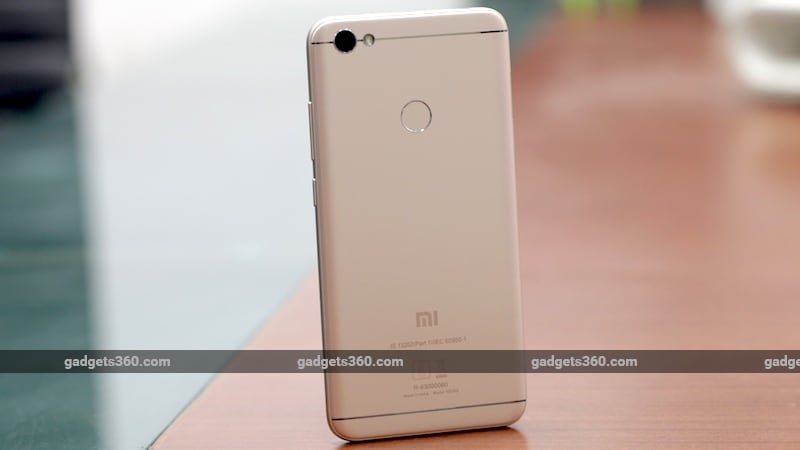After a long time in the rumour mill, messaging platform WhatsApp finally started rolling out its much anticipated message recall/ delete feature last week. This week the feature, called Delete for Everyone, has become available to all WhatsApp users. You can select a message and delete it, and when you do that, you have the option of deleting it for everyone in the chat.
WhatsApp’s delete for everyone feature, which was already available to select users, works in both group chats and private conversations, and allows you to delete the message not just from your phone, but also on the devices of the other users in the conversation. There is one limitation, which is that the message has to be deleted within seven minutes, or it’s going to stay visible to others. Also, once you delete a message, it doesn’t entirely disappear – instead, it’s replaced with the text “This message was deleted”.
WhatsApp Status, Instagram Stories Now at Over 300 Million Daily Active Users Each
That was one of the top stories from this week in tech, but there was a lot more that happened as well, including several phone launches. In India, one of the highlights was the launch of the Xiaomi Redmi Y1 (first impressions), and also the Redmi Y1 Lite. The new Y-series from Xiaomi are “youth focused”, which is another way of saying that these are part of the growing wave of selfie-phones. The Redmi Y1 is available at Rs. 8,999 and Rs. 10,999 for its 3GB/ 32GB and 4GB/ 64BG RAM and storage variants, while the Y1 Lite is available at Rs. 6,999 and comes with 2GB of RAM and 16GB of storage.
Aside from the RAM and storage, the key difference between the two new Xiaomi phones is the from camera – where the Redmi Y1 Lite has a 5-megapixel front camera, the Redmi Y1 has a 13-megapixel camera, and LED selfie-light, and sports a Beautify 3.0 mode which works to improve selfies. The handsets will be available via Amazon India and Mi.com, and also offline stores. This was also the first time that Xiaomi has brought a celebrity to endorse its phones – at the launch event, it announced film star Katrina Kaif as its brand ambassador, another sign of how its turning into a mainstream brand.
Xiaomi Redmi Y1 Lite vs XIaomi Redmi Note 5A
Alongside the launch of the phones, Xiaomi also announced the global availability of MIUI 9, which is being rolled out to India. The Redmi Note 4, Mi MIX 2, and the Mi Max 2 will get the update first, and other phones by the end of the month. It’s being pushed to most of the phones in its line-up, including the Mi 2 launched in 2012. It promises faster load times, split-screen, and other features such as lock-screen shortcuts and an improved notification shade, and much more.
Redmi Y1 Lite vs Redmi Y1: What’s the Difference?
At the start of the week, the company also announced a Mi Max 2 price cut; the large screened phone now starts at Rs. 13,999 for the 32GB variant, and Rs. 14,999 for 64GB model, a Rs. 1,000 price cut. At launch, the phone was available with a Rs. 2,000 discount, but briefly sold at full-price before this new price cut.
Oppo also launched a new selfie-focused smartphone in India, the Oppo F5 (first impressions). This comes a week after the phone’s launch in the Philippines. The phone is an online-exclusive for Flipkart and its price starts at Rs. 19,990. It also includes an AI-powered “beautification” feature for selfies.
There’s a 20-megapixel front camera, and a 16-megapixel rear camera with a dual-LED flash. The phone has a 6-inch 18:9 “full-screen” display with thin bezels, with a resolution of 1080×2160 pixels. The Oppo F5 has 4GB RAM and 32GB storage (there’s also a 6GB/ 64GB variant priced at Rs. 24,990), and it packs an octa-core processor, and a 3200mAh battery.
Oppo F5 First Impressions
We also got the global launch of the Nokia 2, the entry level smartphone from HMD Global. Interestingly, although the phone was launched in India, its price here has not been revealed yet – the company only said it will bear a global average price of EUR 99 (roughly Rs. 7,500), and will become available mid-November.
On the specs front, the phone has a 5-inch HD display, a 1.3GHz quad-core processor, and a large 4100mAh battery. There’s a 5-megapixel front camera and an 8-megapixel rear camera. However, it’s packing only 1GB RAM, and 8GB storage, which puts it on the back-foot compared to some of the competition in the same price range. The company is however confident that through optimisation, it can deliver a competitive experience.
How Nokia 2 Aims to Offer ‘Great Experience’ Despite Its Modest Specifications
Meanwhile, the iPhone X went on sale this week, in India and other countries. The phone’s 256GB variant is priced at Rs. 1,02,000, making it the most expensive “mainstream” phone we’ve seen so far, leaving aside the various luxury devices. That said, although it’s not clear how many iPhone X units were sold in India, huge crowds lined up for it in many parts of the world including India, unlike the relatively thin crowds for the iPhone 8 and iPhone 8 Plus.
If the iPhone X is the most expensive phone right now though, then its closest competitor is the Google Pixel 2 duo, with the Google Pixel 2 XL starting at Rs. 73,000, and the 128GB variant priced at Rs. 82,000. Preorders for the phones started last week, and both Google phones are also now available in India.
There were a couple of other interesting launches as well this week. For one, Oppo launched two more phones, in China. It unveiled the Oppo R11s and Oppo R11s Plus, priced at CNY 2,999 and CNY 3,699 or around Rs. 30,000 and Rs. 36,000, respectively. The company says the phones have a screen-to-body ratio of 85 percent, and 1080×2160 pixel displays. Both are powered by the new Snapdragon 600 SoC, and have dual-rear cameras, and a 20-megapixel front camera.
Both phones also come with 64GB storage, though the Oppo R11s has 4GB RAM while the Oppo R11s Plus has 6GB; there’s also a difference screen size, with the Oppo R11s coming to 6.01-inches while the Oppo R11s Plus is 6.43-inches. As a result, there’s also a difference in battery capacity, with the Oppo R11s packing a 3205mAh battery, while the larger phone has a capacity of 4000mAh.
Google Pixel 2 XL Review
Meanwhile, gaming company Razer, which acquired Nextbit in January, has come out with its own gaming-focused smartphone, called the Razer Phone. The phone was launched at $699 or around Rs. 45,000, and it has a 120Hz display for zero-lag while gaming. It also has front-facing stereo speakers, with a THX-certified DAC, and 12-megapixel dual cameras on the rear. The Razer Phone is powered by a Snapdragon 835 processor and a 4000mAh battery.
The 5.70-inch display operates at a QHD resolution (1440×2560 pixels), and there’s a 8-megapixel front camera, along with 64GB storage, and 8GB RAM. The phone also supports Quick Charge 4+, and supports Dolby Atmos, and supports microSD cards up to 2TB.
How the Boring TV Remote Helped Shape the Netflix UI for the Big Screen
HTC also revealed two new phones, the HTC U11+ and HTC U11 Life. The HTC U11+ features an edge-to-edge display, while the more budget-oriented HTC U11 Life will run Android One outside the US. The HTC U11+ is priced at EUR 799 (roughly Rs. 60,000), while the HTC U11 Life is priced at $349 (roughly Rs. 23,000), and although the HTC U11+ is to launch in only select markets, it’s already listed on the India site so expect it here soon.
HTC U11+ Was Reportedly the ‘Muskie’ Shelved for LG-Made Pixel 2 XL
The HTC U11+ will also have a “squeezable” 6-inch QHD display, with 4GB RAM and 64GB storage, a 2.45GHz octa-core processor, and an 8-megapixel front and 12-megapixel rear camera, along with a 3930mAh battery. The HTC U11 Life on the other hand has a 5.2-inch full-HD display, 3GB RAM and 32GB storage, an octa-core processor, 16-megapixel front and rear cameras, and 2600mAh battery.
There were a couple of other phone launches in India as well. We got the Honor Holly 4 Plus with Snapdragon 435 SoC, priced at Rs. 13,999. The phone is an offline exclusive, and has a 5.5-inch HD display, 3GB RAM, 32GB storage, a 1.4GHz quad-core processor, 8-megapixel and 12-megapixel front and rear cameras, and 4000mAh battery. The second launch was the Karbonn K9 Smart Selfie phone, which has an 8-megapixel front camera, priced at Rs. 4,890. As the name suggests, the 4G-VoLTE enabled phone is focused on selfies, and comes with a smart beauty mode for selfies.
In other news, Paytm took a turn towards messaging, launching a feature called Paytm Inbox. It’s a full-fledged chat platform baked into the Paytm app, pre-empting WhatsApp’s entry into the payments space, as the latter looks to add features for business, and UPI payments integration. Both companies seem to be headed to the same place, but from completely opposite directions.
In a continuing trend of Lite apps for Android, we now have the Amazon Kindle Lite Beta app for Android, available in India. It uses less than 2MB ofon your device and is designed to work with 2G networks. The interface is still quite usable, though some features are reduced to make it work on low-end hardware. This includes X-Ray, Flashcards, Popular Highlights and a few more features, and customisation such as font and display controls are also missing in this version of the app.
And Flipkart’s UPI app PhonePe took things offline, with the launch of a calculator that doubles up as a smart POS terminal for payments. In the demo, it’s shown that the shopkeeper can enter the prices of individual items and total up the bill, just like on a normal calculator, and then press a button to go into pairing mode. It connects to the PhonePe app on your smartphone using Bluetooth low energy, and then you can confirm the amount and make the payment (either using UPI, or any other mode of payment) at which point the shopkeeper receives a confirmation on the POS. This means that the shopkeeper does not require an active Internet connection to accept a digital payment.
The were the highlights for this week – if there’s something else you think people should know about, let us and the other readers know via the comments.
Disclosure: Paytm’s parent company One97 is an investor in Gadgets 360.



